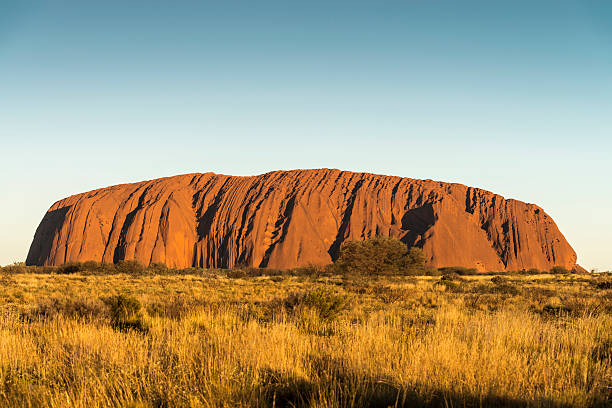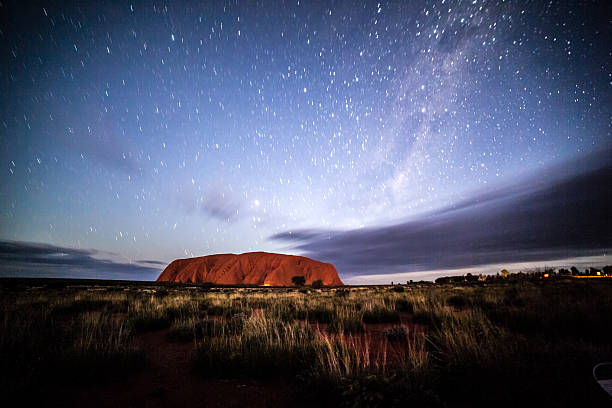Uluru, also known as Ayers Rock, is one of Australia’s most iconic landmarks. This monolithic sandstone formation stands impressively in the heart of the Northern Territory’s arid outback. However, Uluru is much more than just a stunning natural wonder; it holds deep cultural and spiritual significance for the local Anangu people, the traditional custodians of the land. This article delves into the extraordinary natural features of Uluru, its cultural importance, and why it continues to attract visitors from around the world.

The Natural Majesty of Uluru
Uluru rises 348 meters above the surrounding plains and has a total circumference of around 9.4 kilometers. This colossal rock is primarily composed of arkose sandstone, which gives it its distinctive reddish hue, especially spectacular at sunrise and sunset. The rock’s surface features numerous caves, rock formations, and waterholes that add to its mystique. Over millions of years, natural processes such as erosion have carved intricate patterns and shapes, contributing to Uluru’s mesmerizing appearance.
The Cultural Significance of Uluru

For the Anangu people, Uluru is not just a geological wonder but a sacred site with profound spiritual importance. According to Anangu Tjukurpa, the traditional law, Uluru is a living entity, home to numerous ancestral spirits. The Anangu people have a deep connection to the land, and Uluru plays a central role in their cultural practices and oral histories. Various features of the rock are associated with specific ancestral beings and events, making it a spiritual map of their heritage.
Respecting Indigenous Practices
Visitors to Uluru are encouraged to respect the cultural sensitivities of the Anangu people. Climbing Uluru is discouraged as it is against Anangu cultural beliefs and can also be dangerous. Instead, visitors can enjoy the numerous guided tours, which are designed to educate about the site’s cultural and environmental significance. These tours often include traditional stories and explanations of the rock’s features from the Anangu perspective, fostering a deeper appreciation and respect for Indigenous culture.

Flora and Fauna of Uluru
The ecosystem surrounding Uluru is rich and diverse, hosting unique flora and fauna adapted to the harsh desert environment. Plants such as the desert oak, wattles, and various types of grasses have evolved to survive the arid conditions. The fauna includes numerous species of reptiles, birds, and mammals, many of which are unique to the region. Spotting wildlife such as rock wallabies, emus, and various bird species during a visit can be a rewarding experience.
Visitor Experience and Activities

There are multiple ways to explore and experience Uluru, making it a versatile destination for travelers. Popular activities include:
- Guided cultural tours led by Anangu guides.
- Sunrise and sunset viewings for breathtaking photo opportunities.
- Walking and cycling trails around the base of Uluru.
- Helicopter tours for a bird’s eye view.
- Star gazing under the pristine desert sky.
Conclusion
Uluru stands as a monumental symbol of natural beauty and cultural heritage. It embodies the profound connection between the land and its traditional custodians, the Anangu people. By understanding and respecting the cultural significance of Uluru, visitors can enrich their experience while preserving the sanctity of this incredible landmark. Whether you are drawn to its geological splendor or its spiritual resonance, Uluru offers a unique and unforgettable journey into Australia’s heart.
FAQ
Why is Uluru important to the Anangu people?
Uluru is considered a sacred site by the Anangu people, who view it as a living entity inhabited by ancestral spirits. It is deeply intertwined with their cultural practices, traditions, and stories, making it a vital part of their heritage.
Can visitors climb Uluru?
While it is possible to climb Uluru, it is highly discouraged out of respect for Anangu cultural beliefs and for safety reasons. Instead, visitors are encouraged to partake in alternative activities such as guided tours and walks around the base.
What kind of wildlife can be found around Uluru?
The area surrounding Uluru is home to a variety of unique species, including reptiles, mammals, and birds like rock wallabies, emus, perentie lizards, and numerous bird species. The flora consists mainly of desert-adapted plants such as desert oaks and wattles.
When is the best time to visit Uluru?
The best time to visit Uluru is during the cooler months from May to September. During this period, temperatures are more comfortable for outdoor activities, and the skies are generally clear, providing excellent visibility for both day and night-time experiences.
What activities can visitors engage in at Uluru?
Visitors to Uluru have an array of activities to choose from, including guided cultural tours, sunrise and sunset viewings, walking and cycling trails, helicopter tours, and stargazing. These activities provide multiple ways to appreciate both the natural and cultural significance of Uluru.

